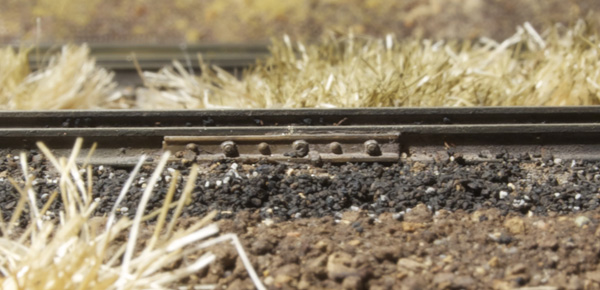Imagine:
It’s been a brutal week at work with long hours, constant project revisions and little time to think. Finally, you’re home. After making up lost time with the family, and knocking out some overdue household chores for the first half of the weekend, there’s a modest slot of sweet, precious time for heading down to the basement to work on the layout.
What greets you at the bottom of the stairs?
A pile of wood scraps and sawdust on the floor along with tools, boxes and other stuff piled everywhere from the last work session- a month ago. A dozen half finished projects scream for your attention. Time is short, where do you even begin? Looking at all the chaos, you begin to understand why they call it a lifetime layout. There’s been a gnawing sense that maybe something smaller, simpler and more manageable wouldn’t be so bad. After all, it’s supposed to be a hobby, not another job.
Simplicity is under appreciated
Small layouts are often treated as a compromised solution to having no layout, until that glorious day when all the stars and planets align, and you find yourself in possession of unlimited space, time, and resources for the “Dream layout.” Time to wake up from dreaming, because for the majority of us that simply isn’t going to happen. Constraints on available space, time and financial resources are and will always be a fact of life in this hobby.
Over the years, I’ve started a host of large layouts and parroted the mainstream thinking that any space without track in it is essentially wasted space. Over time, I grew increasingly dissatisfied with it all. None of my basement filling pipedreams amounted to anything but landfill material, as one gave way to another when my enthusiasm waned or a “new” idea captured my fancy. The amount of wasted resources this scenario was producing became too much to tolerate.
I think the criticisms about small, simple layout designs are unfair. Until one has actual experience with designing, building and operating such a layout, the shortcomings leveled against them is likely to come from individual prejudice rather than empirical fact. I’ve been active in this hobby for a few decades and have had both large and small layouts. It’s my experience that a small layout can be as satisfying as any.
The main criticism centers on the perceived lack of scope in a small layout. Regardless of the available space, one can’t have it all and choices have to be made and priorities set. If the many hand wringing posts online offer any indication, making such decisions is apparently a lost skill.
Any creative person, such as a graphic designer or architect, will tell you that limitations and constraints are the fuel that powers creative solutions. Limitations force one to ask better questions* and arrive at better answers. The idea that creativity can only flourish when there are no boundaries is a myth the amateur clings to. A professional creator knows that making choices encourages one to examine priorities more carefully. When you can’t have it all, what is the most important?
Maybe such skill in choosing comes from a lifetime of experience with the hobby or the maturity of knowing what you actually want from it and enjoy about it. I feel that’s been my truth in recent years. I’ve looked at the current thinking put forth in the popular magazines and said: “No thanks. I prefer a different path.”
A close friend of mine, Trevor Marshall, just held his first impromptu operating session on his new Port Rowan S scale layout. Trevor’s layout is modest in size and scope. The benchwork was built in October of 2011 and now, in early June of 2012, trains are running over handlaid track on at least a portion of the layout. Trevor’s experience in the hobby is similar to mine in that he too has attempted the basement filling exercise multiple times and found the road to completion difficult. From reading his Port Rowan in S scale blog, this layout seems more in line with his preferences and desires. A distinct advantage that Trevor found with a modest design was the ease of balancing family, work and other interests in his life with the hobby. It’s an unspoken and unfortunate reality that, for some, this hobby can become an all consuming force in their lives. I’ve seen this in others and experienced it myself to varying degrees. A smaller layout with a more realistic set of expectations can help avoid this sad melodrama.
Know Thyself
The path Trevor and I chose won’t be for everyone. Satisfying layouts do come in all shapes and sizes and levels of complexity. However, in this hobby one has to ask questions about time, resources and expectations that don’t always have quick and easy answers (see the link below my signature). For those willing to challenge the “bigger is better” assumption, a smaller, simpler layout can be a satisfying journey along a right-of-way less traveled.
Regards,
Mike


A happy conclusion to a vexing problem. The problem being, what exactly do you enjoy about the hobby? I believe most people in the beginning, myself included, know where they want to go, but fail to take into account whether they can get any enjoyment out of the trip. It doesn’t matter if the scope of a project prevents completion in a person’s lifetime if building the thing is ones chief joy. But anticipation wears thin if a finished railroad is the only goal. Those are the layouts that are most likely to end up in dumpsters.
Hi Ed,
I know lot’s of people who enjoy the construction phases and get bored when there’s little or nothing left to do, so they chuck it all, or a lot of it and start over from scratch. To each their own and I’ve been among them too many times.
I’m not so certain that everyone knows where they want to go at the beginning though. If that were true to a fault, then how to explain all the false starts we read about all the time in articles and forum posts? I think the questions of “how” to do something are pretty well asked and answered in the hobby. Questions about why are much harder to answer for most, if the subject is even considered at all.
Regards,
Mike
Ha! You got me. I’m 64 this year and have a very distorted view of “the beginning”. There are many beginnings in this hobby, because there are so many discoveries to be made along the way. As Robert Frost has said,
“I shall be telling this with a sigh
Somewhere ages and ages hence:
Two roads diverged in a wood, and I—
I took the one less traveled by,
And that has made all the difference.”
Hi Ed,
We all have “distorted views” as you say, because the hobby consists of individual practice and skill levels, since we each approach it differently. And yes, there is an endless series of beginnings. That’s what keep things fresh over a lifetime.
My point has always been in articles like this, to encourage a closer examination of one’s approach as a way to avoid false starts. Following that road less traveled by sums up my whole experience of the hobby.
Regards,
Mike